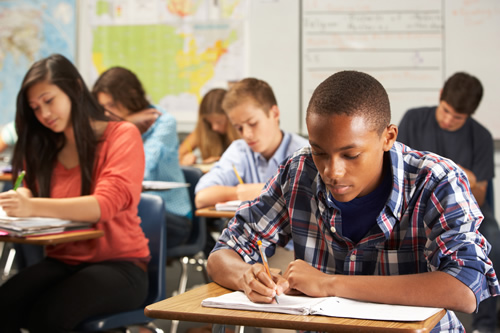In today’s interconnected world, pupil areas play a critical role fit academic and personal experiences.

These communities are not just collections of individuals however are dynamic communities that cultivate development, learning, and partnership among trainees. They vary commonly in kind and function, from campus-based groups to international on-line forums, each offering distinct opportunities for involvement and development.
Whether you are stepping onto an university university for the very first time or taking part in digital discovering settings, recognizing the framework and benefits of pupil areas can substantially enhance your educational journey. This write-up explores the significance of pupil areas, discovering how they function, the benefits they give, and the methods which they can be leveraged for personal and academic success.
Understanding Pupil Neighborhoods
Student neighborhoods are fundamental to the scholastic experience, serving as both social and instructional support systems. At their core, these communities are teams developed naturally by trainees that share typical rate of interests, objectives, or fields. They can be informal, such as study groups, or official, like trainee unions and clubs.
These neighborhoods are defined by questions and answers a common identification and the cumulative quest of expertise, abilities, and experiences. They function as systems for pupils to connect, work together, and add to each other’s growth, prolonging beyond scholastic boundaries to influence personal development and area involvement.
Basically, trainee communities are microcosms of bigger social frameworks, where leadership abilities are sharpened, ideas are traded, and long-lasting friendships are formed. The communications within these neighborhoods reflect a varied blend of cultural, intellectual, and social dynamics.
- Networking Opportunities: Pupil communities offer a network of peers and mentors that can provide support and advice.
- Skill Development: Engaging in area activities helps trainees establish crucial abilities such as communication, management, and team effort.
- Source Gain access to: These neighborhoods commonly give accessibility to scholastic sources, consisting of research study materials and skilled advice.
- Social Involvement: They provide a system for social interaction, easing the transition right into new academic settings and aiding to combat isolation.
Through these various functions, trainee areas end up being integral to the alternative development of pupils, laying a structure for future expert and personal success.
The Advantages of Participating In Pupil Neighborhoods
The benefits of joining student areas are multifaceted, influencing both scholastic and personal rounds.

On a scholastic degree, these neighborhoods motivate joint knowing, enabling trainees to take advantage of varied point of views and know-how. Sharing expertise and resources within a neighborhood can cause a lot more reliable discovering outcomes and enhanced academic performance.
In addition, student areas offer a platform for individual growth and self-discovery. By involving with peers from various backgrounds and self-controls, students gain a more comprehensive worldview, enhancing their cultural competence and compassion. This exposure to diverse viewpoints is important in creating essential reasoning and analytical abilities.
Additionally, energetic engagement in neighborhood activities can improve trainees’ self-confidence and self-esteem. Tackling leadership roles or taking part in discussions and events promotes a feeling of accomplishment and belonging, which is essential for general health and motivation.
Sorts Of Trainee Neighborhoods
Student communities come in different forms, each catering to different interests and goals. These can be generally classified into academic, cultural, leisure, and specialist areas, to name a few. Each type gives special systems and chances for pupil involvement.
- Academic Communities: These are usually focused around particular fields or scholastic passions. Instances include study groups, honors cultures, and departmental clubs.
- Cultural Communities: These teams concentrate on promoting cultural understanding and variety, typically organizing events and activities to commemorate numerous practices.
- Leisure Neighborhoods: These consist of sporting activities groups, entertainment clubs, and hobby-based groups that supply a break from scholastic roughness and advertise physical and mental health.
- Specialist Communities: These are focused on profession development, providing networking chances, workshops, and mentorship programs to prepare pupils for the specialist globe.
By recognizing and involving with the right communities, students can customize their college experiences to line up with their passions and career aspirations, paving the way for a fulfilling academic journey.
Building a Prospering Pupil Area
Creating and maintaining a thriving pupil community needs effort and collaboration from both pupils and schools. It begins with fostering an inclusive atmosphere where all students feel welcomed and valued despite their histories.
Institutions can sustain this by supplying resources and facilities that encourage interaction and involvement. This consists of producing physical spaces like student unions and on-line systems that facilitate interaction and partnership. Furthermore, arranging occasions, workshops, and seminars can better improve interaction, giving students with possibilities to attach and pick up from each other.
Leadership and Pupil Participation
Reliable leadership is critical in supporting a successful pupil area. Leadership roles within these neighborhoods use trainees an opportunity to create and demonstrate their organizational and social abilities. Trainees that think these roles contribute significantly to establishing the tone and direction of their communities, influencing their peers positively.
Motivating management and active participation among pupils not only strengthens the community but likewise encourages people, preparing them for future challenges. By promoting a society of collaboration and support, trainee neighborhoods can grow, leaving a lasting effect on their participants and the academic setting all at once.



